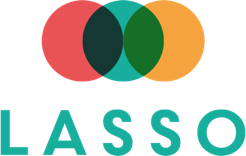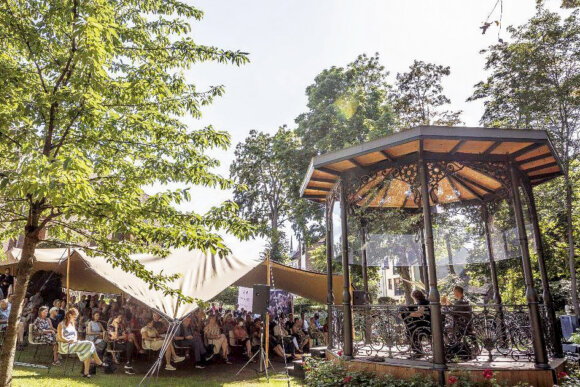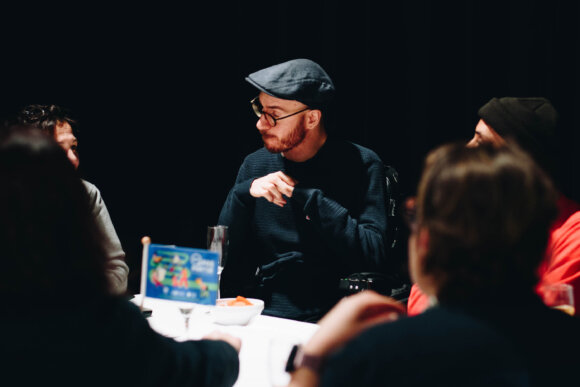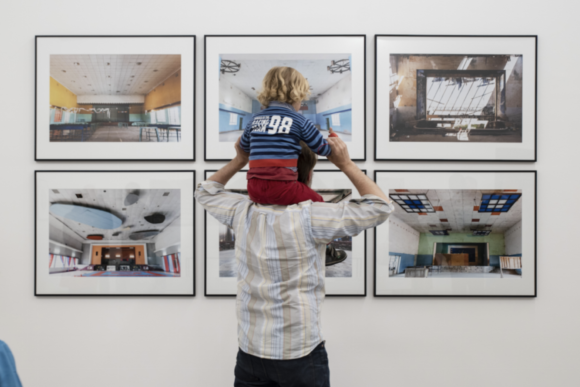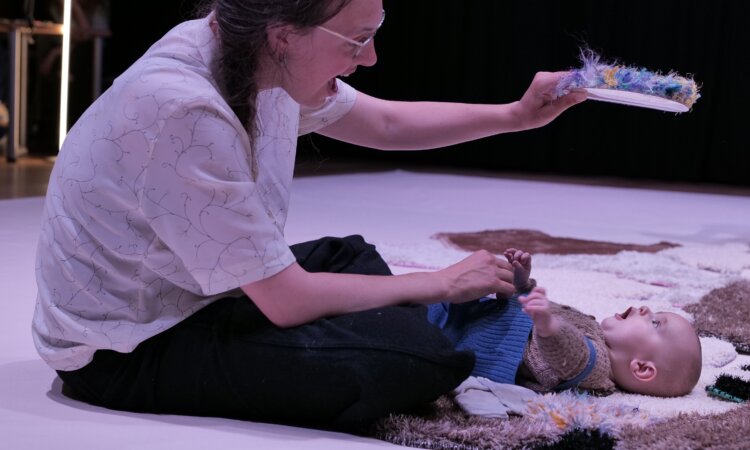
Tapis Partie: meeting each other on a rug
Siene Hollemans
At the end of 2023, community centre De Rinck launched an open call. They were looking for someone to set up a co-creative project with children aged 0 to 6. Katrien Oosterlink was chosen. In February 2024, she began what would eventually become Tapis Partie during a residency. We spoke with her and with Toon Minnen (CC De Rinck).
Lasso: Was this the first time that CC De Rinck issued an open call for a residency programme?
Toon: That's right. The reason was a project call from the VGC to connect artists and community centres. By inviting an artist to explore interaction with the youngest children, we gain new experiences and knowledge. Such a fresh perspective from outside provides new insights that are very valuable.
What triggered you to respond to this call, Katrien?
Katrien: I wanted to do something with the youngest children for a long time. That desire was fuelled by the period I spent working at Theater De Spiegel. In addition, the call for projects fitted in well with my artistic practice. Starting from a social need often creates an interesting breeding ground for my work
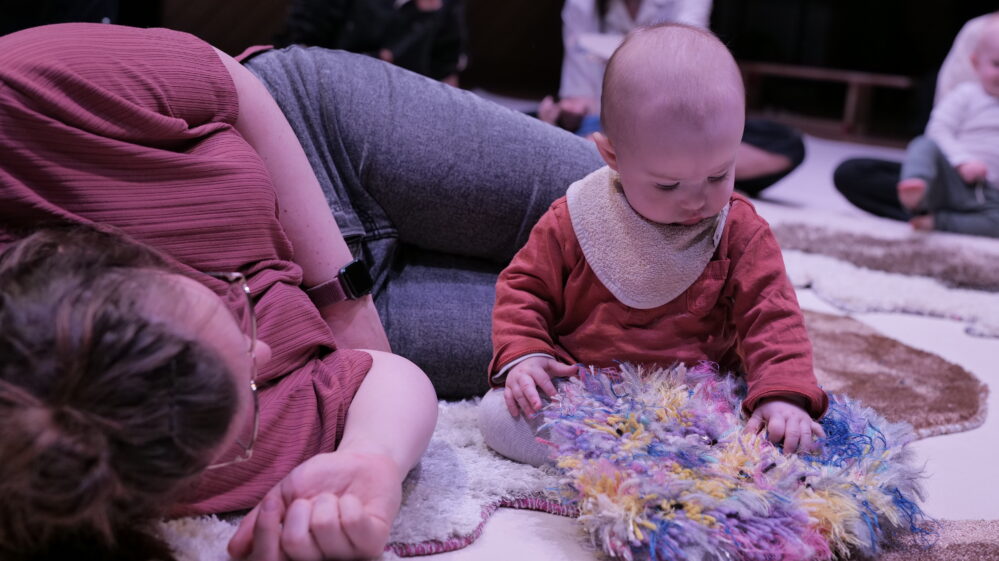
How do you support an artist in such a process?
Toon: We provide administrative and logistical support and have contacts with nurseries and other partners. In the beginning, it's always a balancing act: who takes on which role? And sometimes there were tensions about who was responsible for what, but that's typical of a busy community centre. In the end, we found our way and Katrien herself indicated when she needed support. The fact that Katrien takes a lot of initiative herself and sees the social process as an essential element of her practice is also one of the reasons why we chose her.
I usually work with performers and observe and guide from the outside. Now I took on the coaching myself, and sometimes I missed that external perspective. It's harder to direct yourself, especially when you have to deal with all kinds of social realities at the same time.
- Katrien Oosterlinck
And you, Katrien, how did you experience the collaboration with CC De Rinck?
Katrien: I felt a lot of support. I think that was because the request and the call came from within the centre. As a freelancer, you often find yourself in different worlds, and it's only when you make initial contact that you discover how the collaboration will actually work, both with clients and with partners. For this project, I drew up a cultural and social map of Anderlecht myself and invested time in field research. There were a number of key figures, such as Iris from the municipal daycare. In addition to her substantive input, she also had a lot of practical knowledge of the social environment and had the time to participate in the sessions. Initially, I also contacted places where there was already an artistic atmosphere or experience of working with artists, such as De Beverboom school and the Elmer Zuid daycare centre. I did this deliberately because I am also very vulnerable in such a process at the beginning and there needs to be understanding if something does not go well. This way, I create a safe environment for myself at the start.
Having a base camp is also very important. I had my own table and space at CC De Rinck and direct contact with the people who supported the project. This allowed me to build a good relationship with the coordinator and quickly deal with practical matters. After all, as an artist, you only have four months to go from nothing to a finished product.
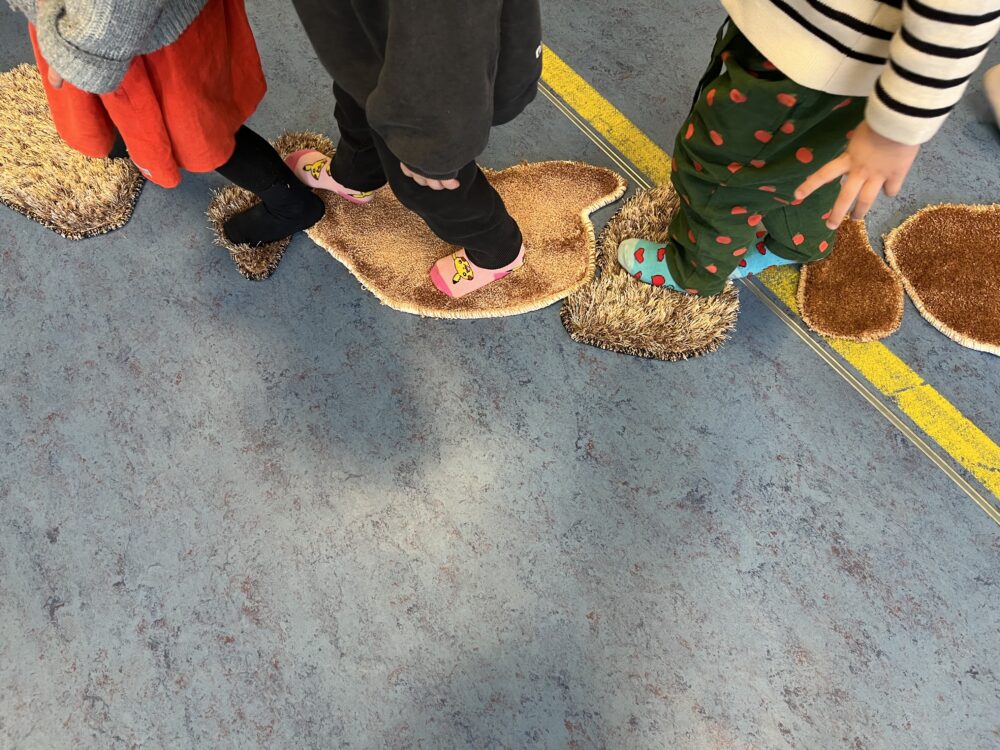
What obstacles did you encounter? What did you learn?
Toon: Some nurseries were a bit reluctant to work with Katrien. This was often because of their already high workload and the expectation that this project would require extra effort. Nevertheless, Katrien managed to get them involved in the project.
We had also planned a few workshops for young families, but attendance was low. Families in precarious situations experience more barriers to participating in art anyway, but the registration process and limited places also contributed to this. Sometimes we managed to gather a group of parents, for example when there is a strong connection with partners such as a Children's Centre, but investing in such relationships on a permanent basis takes time and energy.
Katrien: Actually, a process like this is an obstacle course in itself. I consider this 'threshold work' to be an essential part of my job. By naming and acknowledging it as such, you realise that this is a phase you have to go through in order to create something.
I usually work with performers and observe and guide them from the outside. Now I took on the role of mentor myself, and sometimes I missed that external perspective. It's harder to direct yourself, especially when you have to deal with all kinds of social realities at the same time.
I would describe this process as participatory creation rather than co-creation.
- Katrien Oosterlinck
How did you come up with the idea of the carpets?
Katrien: My work is always about encounters and interaction. I create an environment and invite children, parents and supervisors to work together towards a special moment. By giving choreographic instructions, a basis for interaction is laid. The scenography of carpets forms a meeting place; they make words superfluous. The space itself communicates a great deal and makes it even easier to guide people without words
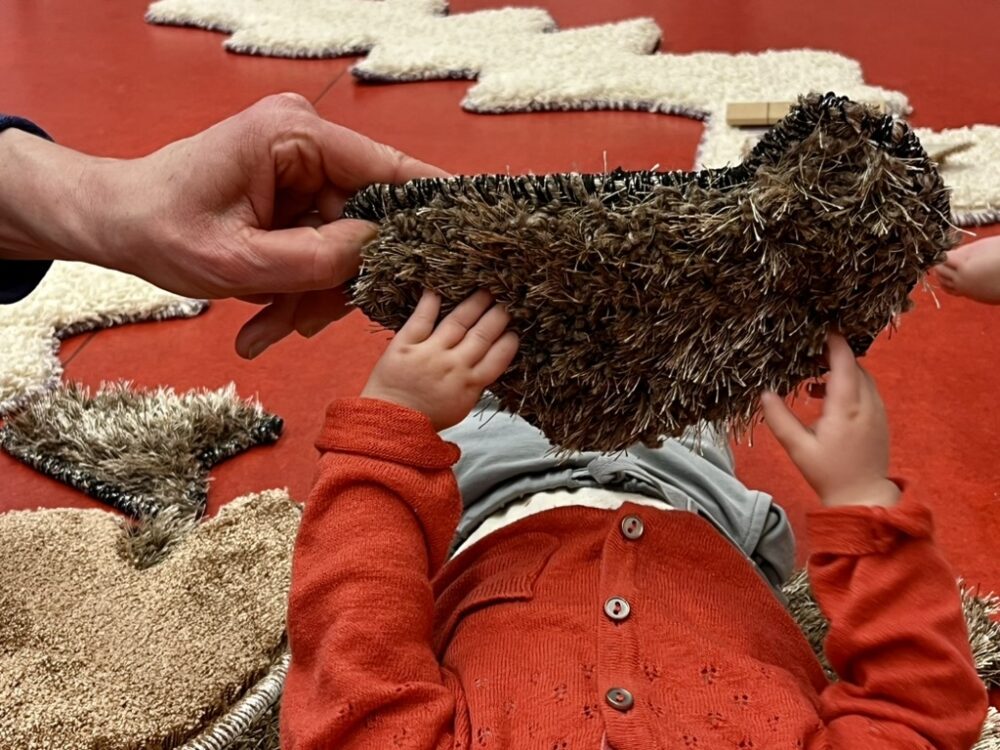
The core of such a project idea sometimes exists for a while. I already had an image of a scenography with carpets in my head from a previous project, and that coincided with this call and the target audience. Initially, I had a visual process in mind in which the carpets themselves were also co-created. Because networking and coordinating with the partners, developing the interactions and the scenography took a lot of time, I had to make choices. The carpets are designed based on children's drawings, but they are not the result of dialogue with the partners. In that sense, I would describe this process as participatory creation rather than co-creation.
What is the difference for you?
Katrien: In co-creation, you have to let go of your aesthetic preferences as an artist. That's certainly not a black-and-white issue, but rather a spectrum. In my work, it's mainly about the moments that arise during interaction, and I make more decisions about the aesthetic choices myself. An example: during the first series of performances, we showed a parent and child the space in De Rinck. Suddenly, the child spontaneously started performing the first scenes. We picked up on his play and did the entire performance with that one parent and that one child.
How do you feel about the process?
Toon: Through the process with Katrien, but also through the Arts Day for Children and the Baboes on Tour project, we succeeded in bringing a lot of babies and toddlers into contact with culture at least once. That's great: it's certainly not a given to be able to work with nurseries, which are often limited in their possibilities due to a lack of resources and people. Nevertheless, I am convinced that it adds enormous value and contributes greatly to the development of the youngest children. That is my motivation to continue working on this.

Katrien: I have learned how important it is to create the right conditions for your work. In an artistic process, I move with the social context, but I also have to ensure that the safe environment I am trying to create is not compromised. To do this, I have to stick to a number of conditions, often simple things. For example: a group of children of the same age, a fixed start and end time, a separate room... These are necessary conditions for a good session or experiment. This allows me to first inform the participants, then dive into my world together with them, and return to hear how it went. That is a safe framework for me.
Do you have any tips for colleagues in the field?
Toon: A process like the one we went through takes a lot of time and sometimes it seems as if little tangible change is taking place. And that's exactly what's important: noticing intangible changes, acknowledging them and talking about them. Katrien created a timeline of the project, which made a big impression and also showed the impact. It was a tangible and visible tool.
Katrien: Sometimes you just have to try things and hit walls. That can create something really beautiful. I think it's important to explore those boundaries, on both sides.
